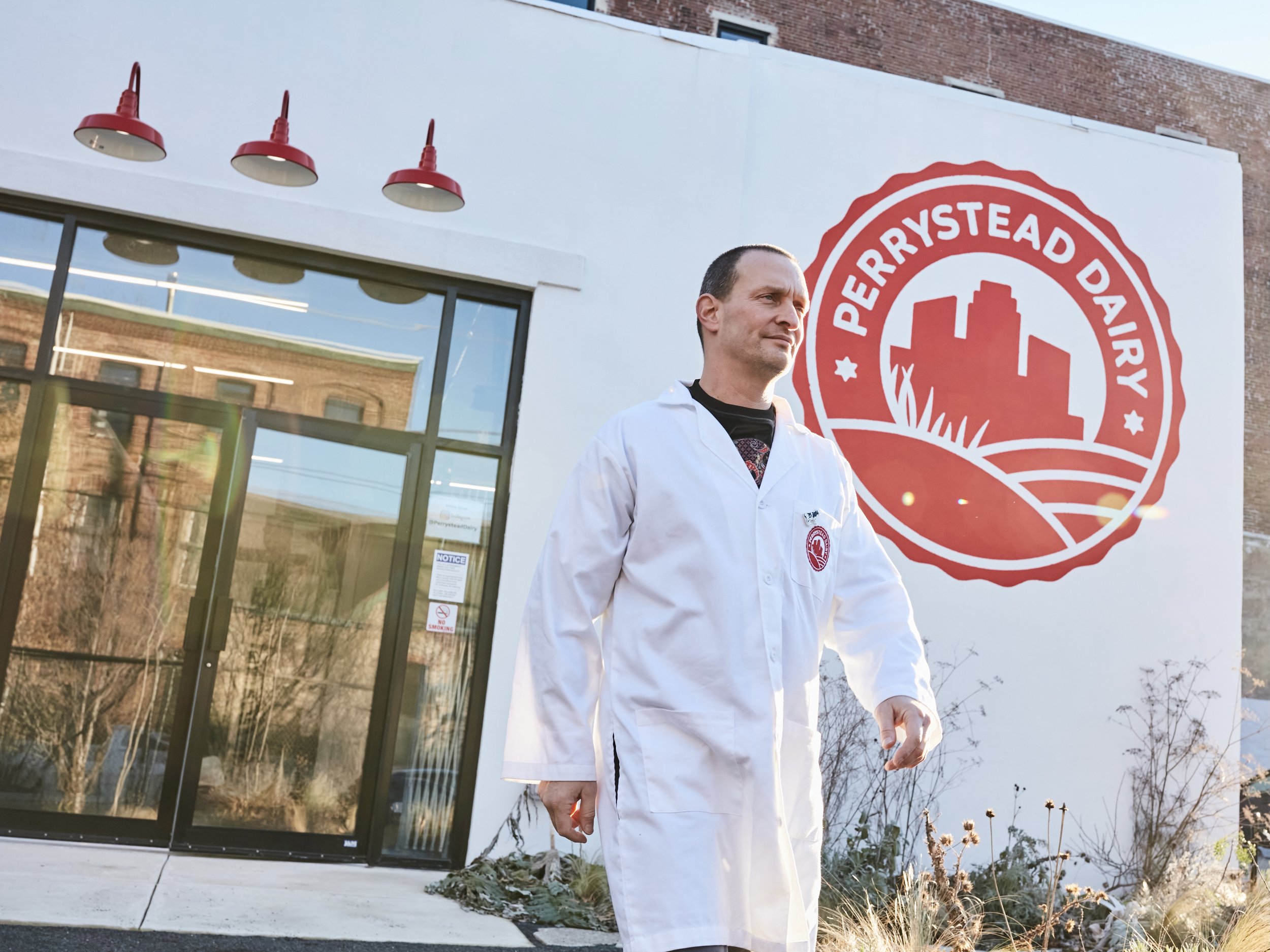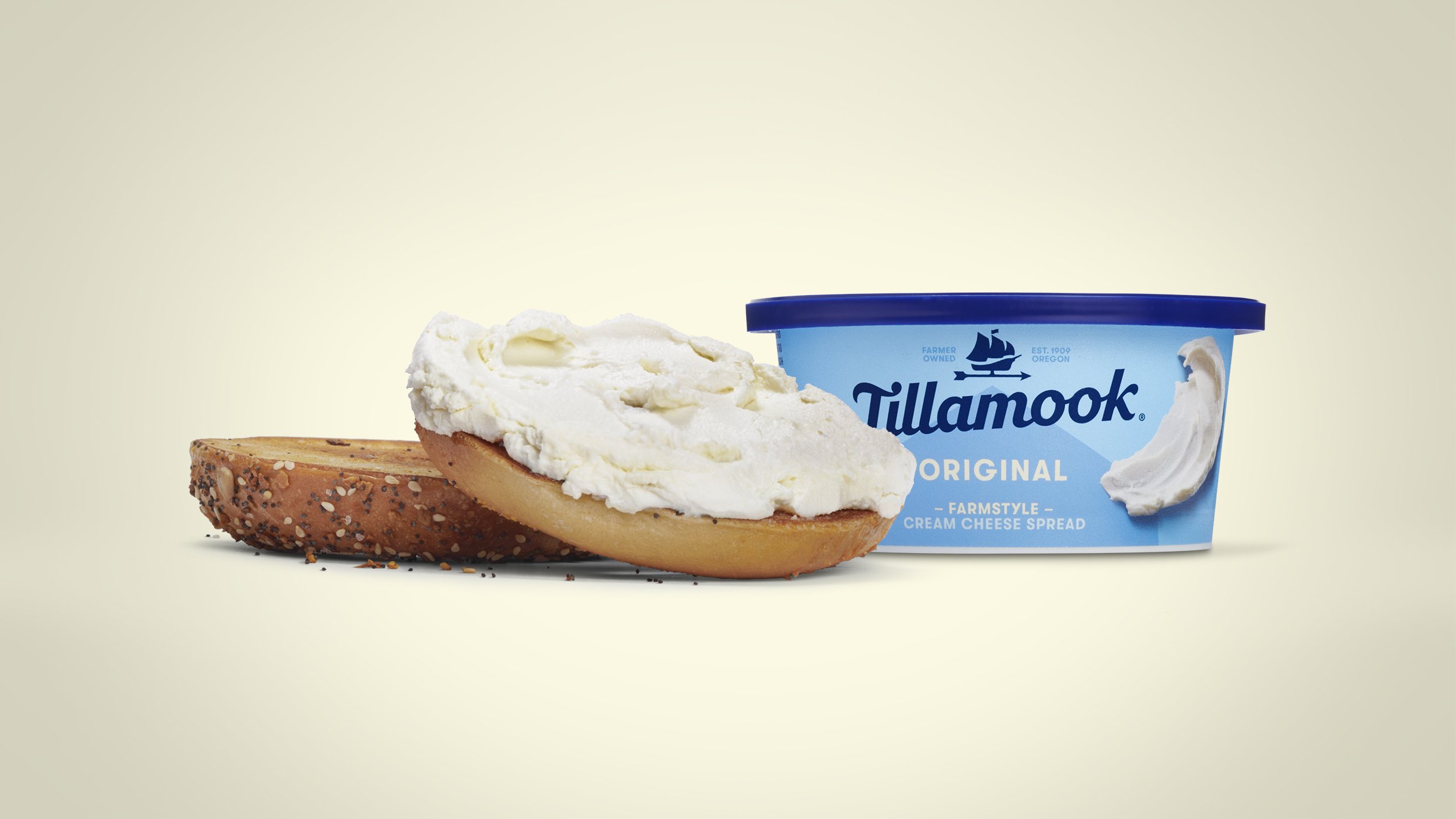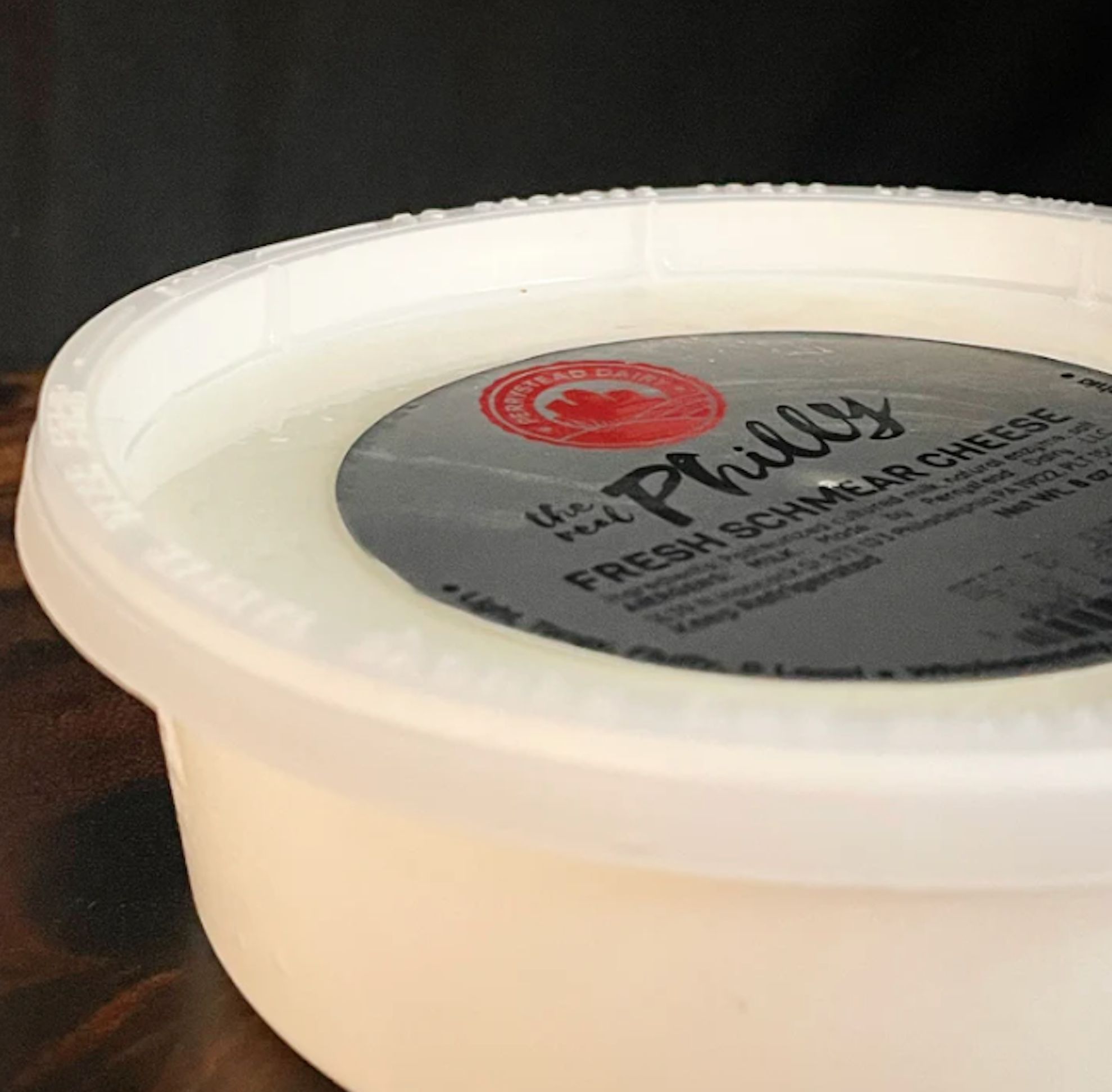Cream Cheese 101
Yoav Perry photo credit Juan Chami
First things first, lest there is any doubt about cream cheese’s rightful place on a cheese blog, “if you separate the whey from the curds and you coagulate the curds somehow then technically it’s cheese, right?” says Yoav Perry, the mastermind behind Philadelphia’s Perrystead Dairy, and creator of cult-worthy cream cheese alternative, The Real Philly Schmear.
While most of us think of cream cheese as a quintessential American product that must necessarily come in silver packaging and is inextricably linked with bagels, spreadable European cheeses — ripened or unripened — such as robiola, brie, fromage blanc, Neufchâtel, Boursin, and mascarpone have long since had a place at the breakfast table, and cream cheese is arguably a worthy cheese product crafted in their spirit. Here we get to know cream cheese’s defining characteristics, look at the way one artisanal cheese maker is improving upon its recipe, and round up several other great cream cheese options.
What is Cream Cheese?
Bagel and cream cheese
The quintessential schmear on bagels, the term “cream cheese” is regulated by the U.S. FDA, and refers to a pasteurized, unaged dairy product that contains at least 33% milkfat, with a moisture content of up to 55%, and has a pH between 4.4 and 4.9. This pH factor accounts for cream cheese’s discernible tang, its defining characteristic other than spreadability, a product of the acidification that creates the curds that will go on to become cream cheese. By comparison, milk itself typically has a pH between 6.4 to 6.8 regardless of animal origin, and even the sharpest of cheddars top out around a pH of 5.2. Of note, while most cream cheese is made from cow’s milk, that is not mandated by the FDA, so goat or sheep’s milk cream cheese is a possibility, so long as its finished fat and moisture content lands in the correct range.
History of Cream Cheese
The history of American cream cheese actually begins with what would become brand-name Philadelphia cream cheese, although its origins are actually in New York, not Philly. In the late 1800s, a dairyman named William A. Lawrence endeavored to make an unripened, Neufchâtel- style cheese in Chester, New York, but added cream to the base for a richer outcome. “Double-crėme Neufchâtel” would have been a real mouthful, even for something as rich as what Lawrence had created, so it was given the nickname “cream cheese,” just as we know it now.
By 1880 Lawrence had partnered with another dairy producer to make the cream cheese, as well as with a distributor, who is credited with dubbing it Philadelphia Cream Cheese. The cheese was neither made in Philadelphia, nor was its distributor located in Philadelphia, and the reasons behind the moniker remain a mystery. (Perhaps to make it more exotic to its mainly New York audience?) Within 10 years demand for the product had increased to the point that additional dairies were added to the Philadelphia-brand operation, and by the turn of the 20th century, at least 5 different New York-based brands were producing cream cheese. While the Philadelphia brand changed ownership several times over the years, Kraft has been the parent company of Philadelphia cream cheese since 1928.
Cream Cheeses of Note
While many supermarket brands of cream cheese are gummy and sticky, several dairies are producing high quality cream cheeses recommended by mongers and quesophiles. All of the following except one are technically cream cheese, and the commonality among them is the commitment to stabilizer-free ingredient lists, and the application of a slow culturing and draining process for optimal texture and flavor.
Sierra Nevada Cheese Company Gina Marie Cream Cheese
Gina Marie Cream cheese
Northern California’s Sierra Nevada Cheese Company makes Gina Marie Cream Cheese in a process that closely resembles William Lawrence’s process of 150 years ago: draining the cultured milk and cream in muslin bags over a 3-day process. The result is a mellow, creamy, and fluffy cheese that spreads well.
Nancys Cream Cheese
Containing live and active cultures, Oregon-based Nancy’s Organic Cultured Cream Cheese is both rich and flavorful with a pleasing tang, and gut-healthy to boot.
Tillamook cream cheese
While Oregon’s Tillamook is a large scale, industrial operation, its award-winning cream cheese spread is a worthy grocery-store option that is made without fillers.
Sweet Grass Lil Moo
Famous for its award-winning, bloomy rind Green Hill, Georgia-based Sweet Grass Dairy utilizes milk from their own herd without the addition of cream for Lil’Moo, describing it as a Boursin-style, spreadable cheese appropriate for both sweet and savory applications.
Crafting a Better Schmear
The Real Philly Schmear package
As an actual Philadelphia-based operation, Perry decided to call his product The Real Philly Schmear to give Philadelphia a foothold in cream cheese mythology that is more than just a name. What’s more, Perry’s product isn’t called cream cheese because it doesn’t actually qualify. “We call it schmear and not cream cheese, because it’s not technically cream cheese,” says Perry, who skips the addition of cream in order to produce a product that is more sustainable, but that doesn’t reach the necessary 33% fat content. “We are using just whole milk,” he says, “so you don’t end up with all this useless nonfat or skim milk.”
“Every process that you take out of it makes it better,” says Perry, referring to the fact that, in addition to skipping the skimming of milk for additional cream, The Real Philly Schmear doesn’t rely on any of the gums or stabilizers that are permitted and typically used for cream cheese. “What we get on the other end is a cheese that has about a third of the butterfat and twice as much protein and calcium,” says Perry. “It’s only cultured, whole milk, and rennet. Nothing else goes into that product, so it’s extremely wholesome, and it’s all about just the quality of the milk that we’re getting.” Partnering with local dairies for milk collection, Perry notes that The Real Philly Schmear can even express some subtle seasonality, with grassier notes in the summer, and a richer mouthfeel in the winter.
Real Philly Schmear
Minus the gums and stabilizers, The Real Philly Schmear has the texture of whipped cream cheese, but its production isn’t mechanized in any way. “It’s not waxy or pasty at all,” says Perry, “it’s fluffy, which is the work of the bacterial cultures,” applied and drained slowly. “Between the polysaccharides and the gas production, we just get the right texture, and with great bacterial cultures—but you cannot make it happen without having excellent milk.”








